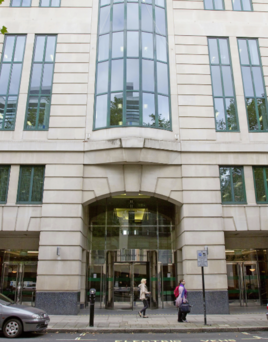In 2017, the DfT published its vision for rail when Chris Grayling was Transport Secretary. It contained little new or revolutionary. Grayling said in his foreword: “The key themes of our vision, reflected in the chapter headings, will be familiar to many readers - they highlight plans to deliver a more reliable, more competitive, growing railway which offers a better deal to passengers.”
DfT’s vision looked for:
- A more reliable railway
- An expanded network
- A better deal for passengers
- A modern workforce
- A productive and innovative sector.
It looked near-term, 2019-24 (Control Period 6), 2024-29 and beyond 2030.
Under the heading of a more reliable railway, DfT put forward the vision of increased integration with closer working between the fixed and moving parts of the network. Suggesting that contractual debate and industry dispute process stood in the way of solving problems, the DfT then cited the success of NR and Virgin Trains in delivering a “best single day of performance ever on the West Coast”. This points towards the DfT rolling out lazy tropes while admitting the current structure could work closely together.
Meanwhile, DfT had been signing franchise agreements that promised passenger benefits that depended on NR delivering work for which DfT had provided no funding. This disconnect lies within DfT and is entirely within ministers’ gift to fix.
More devolution within Network Rail formed another strand of DfT’s vision and this is something NR Chief Executive Andrew Haines is delivering. DfT emphasised the role of NR’s System Operator in developing a better network.
Expansion came with the completion of Thameslink’s upgrade, the arrival (albeit very late and not yet) of Crossrail and various reopening schemes such as East West Rail (but a version cut back by ministers) or line upgrades such as TransPennine Route Upgrade which staggers forward under a heavy weight of expectation yet little overall clarity.
Further into the future comes High Speed 2, while DfT has now cancelled work on Crossrail 2 and appears distinctly cool towards Northern Powerhouse Rail.
The vision broached fares reform saying DfT was working with the rail industry to develop and test potential reforms. Four years on and there’s little visible progress.
Once again, the sticking point is money. Passengers want better value for money, by which they mean cheaper tickets. If the railway is full (and it was before COVID-19) then lower fares equals lower revenue, equals higher subsidy from taxpayers. And the Treasury won’t sign up to that.
With vast sums flowing in to rail operators to combat COVID-19’s devastation, it’s now even less likely that Treasury will agree.
Whatever the result of these discussions, it’s clear that the responsibility sits with DfT while the train operators do all they can to encourage passengers back when the pandemic recedes.
Few could argue with the DfT’s vision for long-term, stable and constructive relationships with rail workers and their representatives. Having staff share in a business’s success, having fully recruited employers with effective modern leadership does not seem much to ask. However, it shouldn’t need DfT to say so.
Meanwhile, DfT claims of wanting a more innovative rail sector are at best nebulous. Train operators led the move towards advance purchase giving many passengers decent discounts on walk-up fares. It was train operators that introduced WiFi back in the 2000s. And it was train operators that brought tilting trains into service in a fraction of the time it took DfT to centrally procure trains to replace High Speed Trains.
But the major point to come from 2017’s vision was DfT’s commitment to franchising. It claimed that franchising had inherent advantages that include dynamism, innovation and public accountability. Yet DfT wanted changes to increase public trust, ensure commercial sustainability and bring adaptability to local circumstances. Those factors could all sit in smarter franchise specifications.
Grayling set out his stall when he said in his foreword: “When Britain’s railways were privatised in the 1990s it was against a background of what many people regarded as terminal decline. Previous attempts to stem losses and stabilise the railway - from Labour’s nationalisation in 1948, to the infamous Beeching cuts in the 1960s and later reorganisation under British Rail - had all failed. By comparison, opening up the railway to private operators, working to requirements set by Government, was an emphatic success. Passenger journeys - which fell by a third between 1960 and 1995 - have since doubled.”














